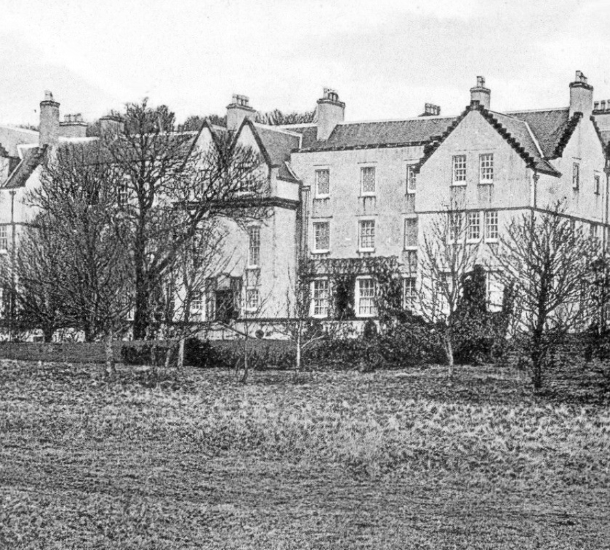

Close

Jean Mary Kinloch made her debut in London in 1916 while World War I was still raging across the channel. She was the daughter of Sir David Kinloch, who never lost the austere bearing of a military officer, and his clever, beautiful wife. Jean grew up in the sheltered world of pre-war noblewomen, but she grew up to embrace the headlong pace and tradition-smashing ethos of the Roaring Twenties.
Jean’s mother always made sure she had a chaperone to accompany her to dinners or dates, and her father retained the right to forbid any young man from seeing her. After a sheltered childhood in Scotland, Jean was thrilled to attend her first dinner in a private room at a hotel on one warm day in mid-July in London when she was just seventeen. She found herself next to a charming, witty young man just a few years older than herself. Richard Norton, who later became lord of Grantley Hall, worked at the War Office and had lots of fun living beyond his means in London. Jean made an immediate impression on him. “I found myself, like everyone else, enchanted by the lovely Jean, then not eighteen, but destined to become acknowledged as one of the great beauties of her time,” he wrote. She had small, delicate features and deep-set, violet-blue eyes. She wore her rich golden-brown hair in a stylish wavy bob. Somehow the sheltered Scottish déubtante was years ahead of the trends of the 1920s.
Norton did all he could to dazzle the impressionable and lovely Jean. He shamelessly boasted of his London adventures, and painted a glowing picture of the swirling cosmopolitan chaos of the capital. He convinced her to play tennis with him the next day (chaperoned, of course) and nearly won her mother’s forever disfavor when he brought her home without enough time to change into a formal dress for dinner. Norton was lovestruck. He abandoned his galivants around London to spend more time with her. Within months, they were in love and agreed to marry one another. British society changed dramatically in the period during and after the First World War, but tradition held sway. It did not matter what Jean and Norton wanted unless he had her father’s blessing. David Kinloch was thoroughly unimpressed with the moderately eligible Norton and his pitiable fortune. He told Norton to stay away. Norton was determined to do all he could for Jean: He sold his car and even his furniture, and he gave up his fashionable London flat. He traded in parties and comfort for a cramped room in an elderly woman’s apartment and a lengthy commute. But he never doubted that Jean was worth it all.
Jean and Richard married in a traditional ceremony in 1919. The young, delicate Jean became the Honorable Mrs. Richard Norton, future Baroness of Grantley. She and Norton came from families whose histories extended back centuries, and they took on the same responsibilities and privileges as their ancestors. Yet after World War I, the blazing, bright nights of the 1920s were on the horizon and the Nortons were in step with the changing times.
Beautiful noblewomen like Mrs. Norton were celebrities of an expanding mass culture, and Jean lived on a stage. In 1920, as a young bride, she was featured on the cover of Country Life with a chic bob and a demure expression looking away from the camera. Vogue tracked how she made country clothes chic, how she wore her hair, and her annual pilgrimages to Palm Beach and the other watering places of the fashionable elite. Vogue praised her as the paradigm of the “new beauty” of the Roaring Twenties. The magazine instructed its readers to look closely at women like Jean, to “copy her weighty elbows dug tightly into her hips, try to achieve her ‘glamour,’ which effect (the author attributes) to her meticulous grooming;” and to study these new beauty’s crisp bony hands that looked most natural holding a cocktail. Below the article, Vogue parodied Jean with an exaggerated sketch complete with arching eyebrows, dark eyeshadow, and a small mouth lined with the black lipstick. “The Honorable Mrs. Richard Norton is so beautifully soigneé as to deserve her unvariable title of ‘lovely’,” Vogue concluded.
Jean may have had a demure sideways glance and a picturesque mother to two beautiful children, but she showed how the role of women changed in the twenties. She managed the Gallery Cinema Theatre in London, which Vogue explained was devoted to “the highest type of motion-picture accompanied by the best music available,” in a caption below a picture of her wearing a long string of pearls over a simple dress. She frequented the lavish and wild parties of the most prolific London hostesses. In one 1926 party, all guests drank to abandon and then put on an ad hoc talent show. Jean and her friends sang an American folk song; other guests cycled around the ballroom on tandems reciting “Daisy, Daisy, Give Me Your Answer, Do;” another act threatened to show their skill at breaking plates until the butler stepped in. To crown the evening, the hostess donned red shoes and a top hat, rallying Jean and the hundreds of other guests to launch into the Charleston.